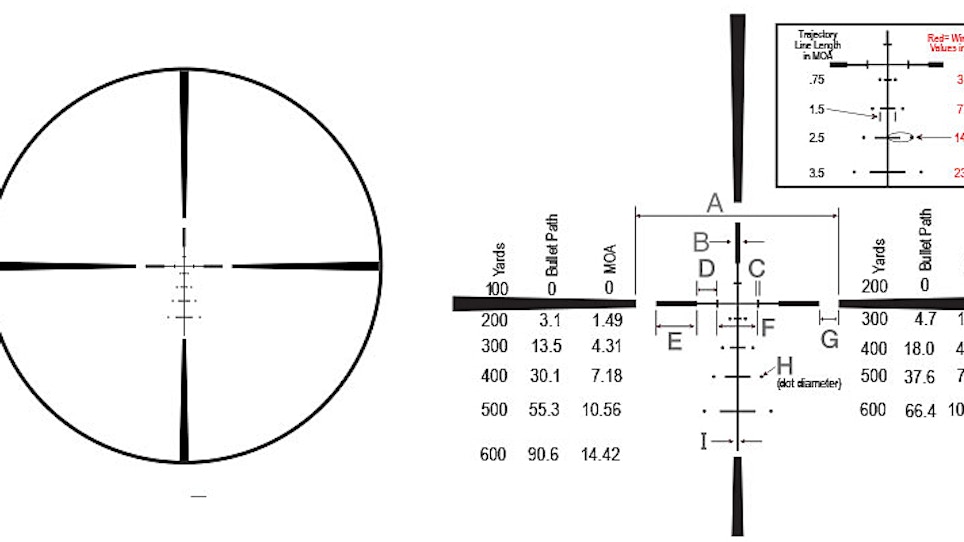The whole “front focal plane” thing is sort of a newish feature that some older retailers might not know a whole lot about. It came out of the tactical community and was a feature typically offered on military and law enforcement SWAT optics.
Here Burris is offering the feature on a hunting scope as some other manufacturers have done relatively recently. I could see retailers needing to be able to sell it as a positive feature to their hunting customers, particularly to those most familiar with traditional optics.
On a front focal plane (first focal plane) reticle, the size of the reticle appears to increase with the increase in magnification.
Front Focal Plane Points
- This can be seen as beneficial for those who like a fine crosshair. The same amount of the target is covered across the range of magnification.
- Range estimation can be done on any magnification.
- A BDC reticle will work across the entire range of magnification.
- The reticle doesn’t tend to perform as well in low light conditions on the lowest settings.
On a rear focal plane reticle (second focal plane), the size of the reticle stays the same no matter what the magnification setting of the scope.
Rear Focal Plane Points
- Generally performs better under low light conditions.
- If you have a reticle that allows for range estimation, they generally only work on the highest magnification setting.
- A BDC reticle will only work on one magnification setting — once again, usually the highest setting.






